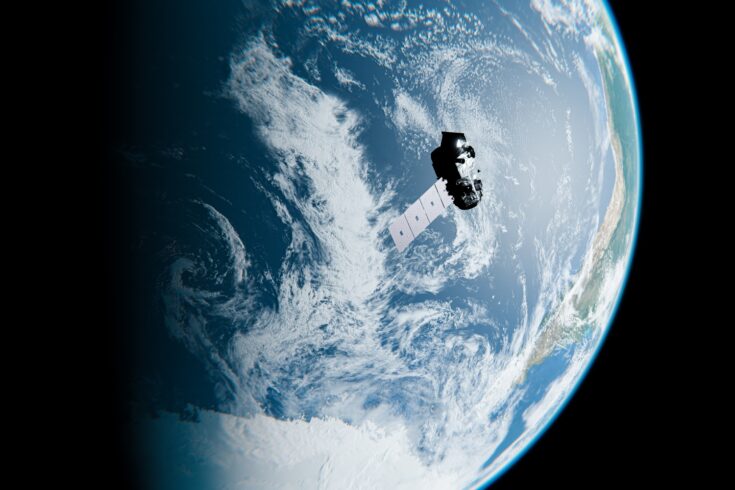RAL Space in Oxfordshire and the UK Astronomy Technology Centre in Edinburgh are home to world-leading expertise in satellite design and manufacturing. They have previously contributed to missions such as the NASA James Webb Space Telescope.
This latest funding will see both institutes collaborate with the UK Space Agency (UKSA) and other public and private UK space groups to advance the next generation of satellites to help address the climate crisis.
Responding to crises
The £9 million UKSA investment will be delivered by the Centre for Earth Observation Instrumentation (CEOI) and will support 12 projects to monitor Earth’s atmosphere and measure critical emissions such as carbon dioxide.
The instruments under development could give a clearer picture of where activities and incidents producing high levels of emissions such as wildfires or inefficient farming techniques are taking place.
In doing so, they will enable decision-makers across the world to coordinate more efficient and effective responses.
Supporting the space sector
Andrew Griffith MP, Minister for Space at the Department for Science, Innovation and Technology, said:
This exciting new generation of satellite instruments will play a key part in our efforts to tackle climate change, pinpointing where emissions are highest on our planet and cementing UK leadership in Earth observation, while helping to attract more private investment into this fast-growing sector.
Beth Greenaway, Head of Earth Observation and Climate at UKSA, said:
These new projects highlight the strength and diversity of UK expertise in both universities and companies across the UK – they are at the cutting edge of inventing the newest tools and techniques. This latest call shows that we are ready to match the commitment of the UK space sector to ensuring the Earth observation capabilities stay at the forefront of the global demand.
Developing new technologies
STFC RAL Space will co-lead on several of the funded projects.
One, a collaboration with the University of Leeds, will develop a more advanced receiver for the Keystone mission to gather data on the poorly understood mesosphere and lower thermosphere of the atmosphere.
Another, led by a consortia including RAL Space and the British Geological Survey, aims to develop a new kind of magnetometer for measuring magnetic fields. This will improve data accuracy for a range of fields including Earth and space weather observation.
Climate science innovations
Dr Jane Hurley, Head of Earth Observation and Atmospheric Science at RAL Space, says:
Earth observation is a vitally important way for us to measure human impact on our planet, as well as monitoring climate, natural disasters and weather.
RAL Space has a strong heritage in developing novel instruments to meet scientific and societal needs, so it’s fantastic to see four of our ongoing projects recognised with CEOI funding.
The diversity of these applications, from quantum sensing to millimetre-wave technology, really show the broad range of technology development we lead, and puts us in a brilliant position to grow the UK’s Earth observation capabilities as part of the vision of the National Space Strategy.
Further information
Find out more information on the investment and all funded projects.
UKRI press team contact
Email: press@ukri.org

